#Character: Alfred P. Doolittle
Explore tagged Tumblr posts
Note
audrey hepburn leaving at the quarterfinals in the same manner my previous "champion", jeremy brett, did, feels.. correct somehow? i'm okay with it, surprisingly.
like, they're going together. my type is people who wouldn't get past the quarterfinals and that's okay. it's not too niche a taste neither too mainstream.
if there was a poll for movies my fair lady would leave on the quarterfinals too i guess
(i will concede, toshiro mifune and eartha kitt are also very very hot and deserve their win a LOT. they just weren't in The Movie i grew up watching and am named after)
Here anon. Have a condolence poll.
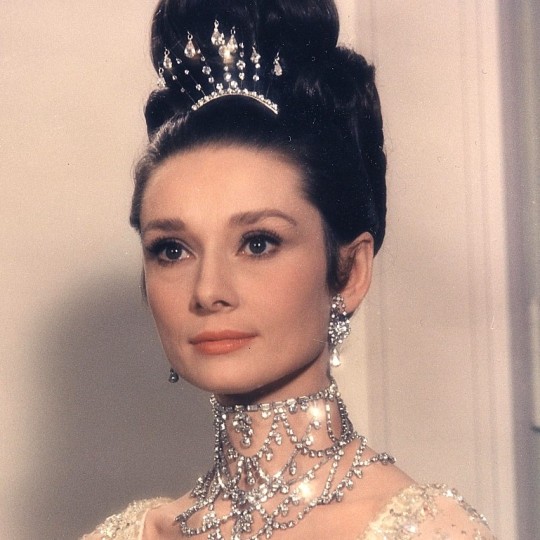


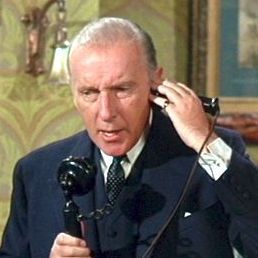
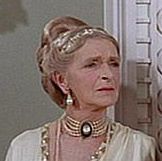
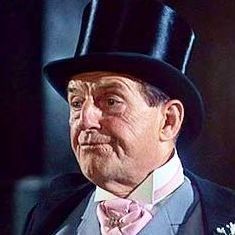
159 notes
·
View notes
Text
My Fair Lady Lincoln Center: Friday, December 2, 2022, 9 p.m. CT

Now recently there have been a fair amount of people becoming interested in My Fair Lady, and so it is the exact right time for me to stream it again!
My Fair Lady has been described as a perfect musical, and I would most heartily agree. This production, the 2018 Broadway revival, which was recently staged in the West End and is currently on tour, is the icing on top of an already delicious cake. The cast is perfect. Harry Hadden-Paton really redefined the role of Higgins; he’s the best I’ve ever seen in the role. He delved into the depths of Higgins’ character better than anyone else I’ve seen. Laura Benanti soars as Eliza, mixing both humor and emotional depth expertly. Her Eliza is one of my favorites, and there are certain acting choices she makes that have stuck with me for a long time. The supporting cast is also delightful. Christian Dante White as Freddy is goofy and charming in a way I’ve never seen a Freddy be before, Danny Burstein is pitch-perfectly slimy and funny as Alfred P. Doolittle, and Rosemary Harris as Mrs. Higgins has a particular moment that breaks my heart.
If you love My Fair Lady already, watch this production. If you’ve never seen My Fair Lady, watch this production. My Fair Lady is one of the best musicals of all time, and this production really proves that.
Link and password will be posted at 8:45 p.m.
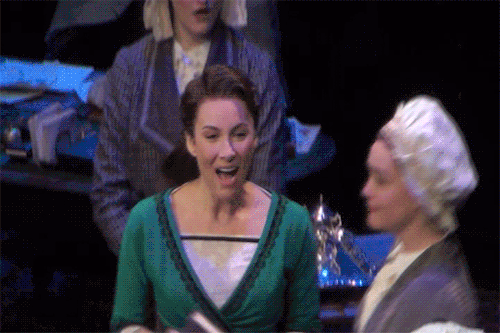
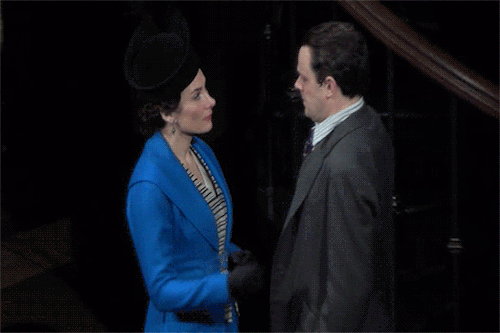
#My Fair Lady#MFL#Harry Hadden-Paton#Laura Benanti#musical theater#broadway#my streams#Come watch MFL with me!!#It's so good!!
27 notes
·
View notes
Photo










Broadway Birthday: Danny Burstein (June 14th)
#Broadway Birthday#Danny Burstein#Fiddler on the Roof#Moulin Rouge!#Character: Harold Zidler#Character: Nick Bottom#A Midsummer Night's Dream#Character: Max Hohmann#Snow Geese#Cabaret#Character: Herr Schultz#Character: Luther Billis#Follies#South Pacific#Women on the Verge of a Nervous Breakdown#Character: Alfred P. Doolittle#My Fair Lady#Character: Taxi Driver#Character: Buddy Plummer#Golden Boy#Character: Tevye#Character: Tokio
9 notes
·
View notes
Photo

TV Guide - November 3 - 9, 1962
Stanley Augustus Holloway OBE (October 1, 1890 – January 30, 1982) Actor, comedian, singer and monologist. He was famous for his comic and character roles on stage and screen, especially that of Alfred P. Doolittle in My Fair Lady. He was also renowned for his comic monologues and songs, which he performed and recorded throughout most of his 70-year career.
In 1964, he appeared as Bellomy in the Hallmark Hall of Fame television production of The Fantasticks.
Holloway played Pooh-Bah in a 1960 US television Bell Telephone Hour production of The Mikado, produced by the veteran Gilbert and Sullivan performer Martyn Green. Holloway appeared with Groucho Marx and Helen Traubel of the Metropolitan Opera.
In 1962 Holloway played the role of an English butler called Higgins in a US television sitcom called Our Man Higgins. It ran for only a season. His son Julian also appeared in the series. . He returned to the US a few more times after that to take part in The Dean Martin Show three times and The Red Skelton Show twice. (Wikipedia)
7 notes
·
View notes
Text
youtube
“Well Scene” and “The Bargain”/ “Waltz of Treachery,” Broadway, February, 2007. Alexander Gemignani as Jean Valjean, Gary Beach as Thénardier, Jenny Galloway as Mme. Thénardier, Carly Rose Sonenclar as Young Cosette.
Gary and Jenny’s Thénardiers are hilarious. I remember at the time that Gary got some flack for being too cartoonish in the role, and I’ll admit he’s a little hammy here and there (e.g. the over-the-top bouncing of little Cosette on his knee), but overall I think he does an excellent job. And as for Jenny, what needs to be said? We all know her from the 10th and 25th Anniversary Concerts: she is Mme. T. All their little slimy gestures to each other, their role-playing as kind, loving foster parents, and their cackling over the money at the end is all spot-on.
Surprisingly, Alexander’s Valjean is funny too. His increasingly incredulous, irritated expressions add very much to the scene’s comedy. Given that his more recent roles include King George III in Hamilton and Alfred P. Doolittle in My Fair Lady, it’s no surprise that he should have a talent for humor, yet he does it in a subtle way that still feels fully in character for Valjean. He also beautifully shows us Valjean’s kindness, even reaching out to comfort the “crying” Thénardier over Fantine’s death (which again, adds to the humor), and giving Cosette so much tenderness, rubbing her cold little hands, caressing her face on “I will not forsake my vow,” and of course doing the affectionate nose-touch that so many Valjeans do. Especially heartwarming is the very end of the scene, where he freezes in surprise when Cosette hugs him (clearly the first hug he’s had in decades), and then seems truly overwhelmed with joy as he picks her up and spins her around, laughing.
Carly’s voice is a little too belty for Young Cosette, IMHO, but she definitely looks and acts the part well.
Overall, this scene is excellently done by everyone.
#les mis#les miserables#well scene#the bargain#waltz of treachery#broadway#2007#alexander gemignani#jean valjean#gary beach#thenardier#jenny galloway#mme. thenardier#carly rose sonenclar#young cosette#youtube
20 notes
·
View notes
Text
BARBARA PEPPER
May 31, 1915 – July 18, 1969

Barbara Pepper was born Marion Pepper in New York City. Against her parents wishes, she entered show business at age 16, appearing as a Ziegfeld girl and in George White’s Scandals on Broadway. Pepper and Lucille Ball were friends from their showgirl days and also appeared in six films together. Pepper is perhaps best remembered for her role as the first actor to play Doris Ziffel (‘mother’ to Arnold the pig) on “Green Acres.”
“Millionaires like to have their money's worth, and showgirls know how to make them think they're getting it.”

Newly arrived in Hollywood, Lucille (left) and Pepper (right) were Goldwyn Girls in Eddie Cantor’s Roman Scandals (1933).

Both were at the start of their careers, Pepper a mere teenager. They also appeared together in:
Moulin Rouge (1934)
Bottoms Up (1934)
Kid Millions (1934)
Winterset (1936)
The Fuller Brush Girl (1950)
From 1933 to 1943 Barbara was a very prolific actress, appearing in nearly 50 movies, mostly in supporting roles or in minor films. In 1944, Pepper met actor Craig Reynolds on the set of the film The Strange Affair of Uncle Harry and the two married in 1945. They had two sons together.

After Bea Benadaret proved unavailable, Pepper was one of Lucy’s top choices to play Ethel Mertz. There was concern, however, about her drinking. After the death of her husband in a motorcycle accident in 1949, Pepper developed an alcohol problem and gained weight. With William Frawley (who also had a drinking problem) already cast, it was feared that it was too risky to also cast Pepper so Vivian Vance (a stage actress with no film experience) was offered the role. Lucy stayed true to Pepper by keeping her gainfully employed in day roles. She was seen (or heard) in ten episodes of “I Love Lucy”:

“Breaking the Lease” (S1;18) - Party Guest
PEPPER (about Fred & Ethel): “They sold us the last ticket!”

“The Freezer” (S1;E29) - Woman in Butcher Shop
PEPPER: “I’ll try a round steak!”

“The Anniversary Present” (S2;E3) - Voice of the Woman in 4B (uncredited)
VOICE: “Albert!!!”

“Ricky Loses His Voice” (S2;E9) - Chorus Girl
For this appearance, Pepper drew upon her real-life experience as a former Ziegfeld showgirl.
GIRLS: “We’d like to have you meet, a little bit of heaven. The queen of all the flappers, of 1952! PEPPER: 27! ...er... 52!

“Lucy Goes to the Hospital” (S2;E16) - Nurse
PEPPER (to Policeman): “He was right in here a minute ago!”

“Lucy’s Last Birthday” (S2;E25) - Member of Friends of the Friendless (uncredited)

Oops! During her wordless scene, Barbara Pepper loses her hat when walking under a tree branch. She marches off and leaves it in the park and doesn’t wear it in the scene at the Tropicana.

“The Girls Go Into Business” (S3;E2) - Grace, Hanson’s Dress Shop Customer
This is one of the only times Pepper actually has a character name. Her scene partner, Kay Wiley, calls her Grace. It may not be her ‘real’ name since they aren’t real customers; they are Mrs. Hanson’s co-conspirators to lure a buyer.
GRACE: “I’ll take it!”

“Sentimental Anniversary” (S3;E16) - Party Guest (uncredited)

“The Tour” (S4;E30) - Tourist on Bus
LUCY: “Pardon me, this seat is taken.” TOURIST (not moving): “It sure is, honey.”

“The Homecoming” (S5;E6) - Neighbor
Trivia: Pepper wears the same fox stole she wore in the butcher shop in 1952!
Although she never appeared on “The Lucy Show”, Pepper did return to Desilu for two guest appearances on “The Untouchables” (1961 & 1962) as well as playing the Fat Lady in Desilu’s circus series “The Greatest Show on Earth” (1964).

Although not a Desilu sitcom, the connection of Lucille Ball to “Green Acres” is interesting. Writer Jay Sommers adapted “Green Acres” (1965-71) from his radio show, "Granby's Green Acres", which aired as a summer replacement for Lucille Ball's radio show "My Favorite Husband." "Granby's Green Acres" starred Gale Gordon and “Petticoat Junction” star Bea Benaderet, who also played the Atterburys on “My Favorite Husband”.

Although best known as Doris Ziffel, ‘mother’ of Arnold the Piggy, on “Green Acres” the character actually began on its sister show, “Petticoat Junction”. For her first of three appearances in Hooterville she was known as Ruthie Ziffel, wife of Fred (played by Hank Patterson on both shows). When “Green Acres” premiered in 1965, Pepper and Patterson were added as recurring characters. Both sitcoms stemmed from “The Beverly Hillbillies”, although only Frank Cady (as Mr. Drucker) regularly was seen on all three. After 30 episodes, heart ailments finally forced her to leave the series. She died in July 1969 at the age of 54. Veteran actress Fran Ryan replaced her as Doris Ziffel for five episodes. All three shows fell victims to CBS’s “rural purge” in 1971.

During her time in Hooterville, Pepper acted opposite “Lucy” alumni Eddie Albert (The Fuller Brush Girl) and Jerry Hausner (”Lucy’s Last Birthday”). Other Hootervillians with Lucy connections include Eleanor Audley (Mrs. Douglas), Bea Benadaret (Kate Bradley), Charles Lane, Byron Foulger, Shirley Mitchell, Roy Roberts, Benny Rubin, Gail Bonney, Ray Kellogg, Eve McVeagh, Bobby Jellison, Herb Vigran, Amzie Strickland, Ross Elliot, George O’Hanlon, Joi Lansing, Doris Packer, Joan Blondell, Nancy Kulp, Sid Melton, Lou Krugman, Elvia Allman, Hayden Rorke, Janet Waldo, Maurice Marsac, and Rudy Vallee. Eva Gabor (Lisa Douglas) guest-starred in two episodes of “Here’s Lucy”.
Film and TV fans will see Pepper pop up on episodes of classic shows like “Father Knows Best” (in 1956), “Bonanza” (in 1959), “The Danny Thomas Show” (in 1962), “Perry Mason” (1957-63), “Ozzie and Harriet” (1956-63), “Mr. Ed” (1965), “My Three Sons” (1966), and “Mayberry R.F.D.” (1969).
Her experience as a showgirl helped her get cast in such musicals as The Music Man (1965) as a citizen of River City, and My Fair Lady (1964), dancing with Alfred P. Doolittle.

#Barbara Pepper#Lucille Ball#I Love Lucy#Desi Arnaz#Vivian Vance#William Frawley#Green Acres#Arnold the Pig#Hooterville#Grandy's Green Acres#Goldwyn Girls#Roman Scandals#Bea Benadaret#The Tour#Hank Patterson#Parly Baer#Gale Gordon#Kay Wiley#Mabel Paige
12 notes
·
View notes
Text
Stanley Holloway admitted 'lawful bigamy' with second wife: 'Suppose I'm committing it!' | Films | Entertainment
Stanley Holloway admitted ‘lawful bigamy’ with second wife: ‘Suppose I’m committing it!’ | Films | Entertainment
Stanley was one of Britain’s best-loved actors and comedians, having starred in a number of films in a career that spanned 70 years. He was most famous for his comic and character roles both on stage and on screen, and was renowned for his comedic monologues and songs. Perhaps his best-known persona was that of Alfred P Doolittle in, ‘My Fair Lady‘. Today, viewers will be delighted to be…

View On WordPress
0 notes
Text
Alfred P Doolittle is honestly the best character in fiction
1 note
·
View note
Text
It takes Henry Higgins six months to transform Eliza Doolittle from a “draggle-tailed guttersnipe” in “My Fair Lady” to a lady who can pass as a duchess at the Embassy Ball. Now, ten months after the opening of Lincoln Center’s fourth Broadway revival, the musical itself has been transformed, with the replacement of four of the principal roles – especially Laura Benanti as Eliza. The show of course offers the same sumptuous design, lively choreography, and lush orchestrations, with the 15 songs (every single one of them memorable) lavishly backed by a 28-piece orchestra. The performances of the original cast members who remain with the show have also deepened with detail, from Harry Hadden-Paton as Henry Higgins and Allan Corduner as his more kindly linguist-in-cahoots Colonel Pickering to Linda Mugleston as Higgins’ subtly exasperated secretary Mrs. Pierce. The production is if anything more deserving of the ten Tony nominations it received, and particularly costume designer Catherine Zuber’s Tony win (her ninth.) The show’s delicious score is now also, to be frank, better sung. I was surprised and delighted by Lauren Ambrose’s voice, but she was making her Broadway musical debut. Laura Benanti is an extraordinarily accomplished singer, with range and tonality that comes not just from talent but from experience; “My Fair Lady” marks the Tony winning actress’s ninth Broadway musical over two decades. Above all, Benanti’s interpretation of the role is markedly different – and arguably far more in sync with Barlett Sher’s direction. As the original Eliza, Ambrose was most in her element as lowborn feral street vendor, sniveling and insecure. When Higgins berated her, she squawked as if injured. When halfway through Higgins’ training, he brought the nervous Eliza to Ascot to test-run her newfound upper class manner, she was saddled with a fashionable, ridiculously unwieldy hat that looked in danger of toppling to the ground, and bringing her with it. By contrast, Benanti’s Eliza has an inner nobility from the get-go. We see it in her almost regal bearing, even when smudged with dirt, and in the way she talks back to Henry Higgins – when Higgins commands “don’t sit there crooning like a bilious pigeon,” Eliza defiantly…coos. Gone is the toppling hat in that scene at Ascot; this Eliza is too inherently elegant for that. There is instead some quick business with her grasping a parasol with her knees, but the scene is less slapstick now. And later, when Eliza’s outer gracefulness matches what we detected as her inner grace, there is more power behind her observation: “The difference between a lady and a flower girl is not how she behaves, but how she is treated.”
Click on any photograph by Joan Marcus to see it enlarged.
Laura Benanti as the flower girl Eliza and Harry Hadden-Paton as the linguist Henry Higgins
Harry Hadden-Paton, Laura Benanti and Allan Cornuer in “The Rain in Spain Stays Mainly in the Plain”
Laura Benanti as Eliza Doolittle and Christian Dante White as Freddy to her left, with Allan Corduner as Colonel Pickering to her right. At the Ascot races.
Danny Burstein and company, “Get Me To The Couch on Time”
Rosemary Harris as Mrs. Higgins and Laura Benanti as Eliza
Danny Burstein as Alfred P. Doolittle
Christian Dante White as Freddy in “On the Street Where You Live.”
Harry Hadden-Paton as Henry Higgins and Laura Benanti as Eliza
Benanti’s approach to the character affects the other characters as well. This is certainly true with the three other characters portrayed by the newcomers. The exquisite Rosemary Harris now portrays Henry Higgins’ mother – the 27th role on Broadway for the 91-year-old actress. When this Mrs. Higgins befriends Eliza, it feels as if she is responding as somebody she sees as an equal – or at least someone with qualities she admires. When Dame Diana Rigg as Mrs. Higgins took Ambrose’s Eliza under her wing, it felt as if she was pitying, or at least taking a kindly interest in, a social inferior. Similarly, Danny Burstein as Eliza’s father Alfred P. Doolittle seems to treat his daughter like an equal. As Freddy her suitor, Christian Dante White is intensely swoon-worthy when he sings the romantic ballad “On the Street Where You Live.” The previous Freddy was an aristocratic dolt, his upper class imperviousness helping to explain why he would fall for somebody that he didn’t realize was outside his social class. This Freddy seems genuinely tickled by Eliza’s fish-out-of-water antics and her strong character.
Laura Benanti’s independent Eliza removes the question that I felt looming over this production of My Fair Lady when I saw it last April: Does the story still work if, as the director intends, we see no romantic feelings develop between Eliza and Henry Higgins? Yes, it still works.
My Fair Lady Review: How Laura Benanti as Eliza Changes The Musical It takes Henry Higgins six months to transform Eliza Doolittle from a “draggle-tailed guttersnipe” in “My Fair Lady” to a lady who can pass as a duchess at the Embassy Ball.
0 notes
Text
(Photo Credit Fletcher/Calcetas)
Written by Daniella Litvak
In the year 1912 a play by George Bernard Shaw called Pygmalion made its debut. Nearly fifty years later Alan Jay Lerner and Frederick Loewe adapted Pygmalion into the musical My Fair Lady, which starring Julie Andrews and Rex Harrison. Then in 1964 came the cinematic version with Rex Harrison and Audrey Hepburn. Whether you are more familiar with the stage or screen version, My Fair Lady is a highly acclaimed classic.
It is early twentieth century Britain. Prof. Henry Higgins (Chris Caputo) is a specialist of phonetics who uses his brilliance as an excuse to be arrogant, sexist and snobbish. He boasts he can transform an uncouth, Cockney flower girl into a lady in time for the Embassy Ball. The flower girl in question, Eliza Doolittle (Jena Slipp) sees this as her opportunity to rise up from the gutter and takes Higgins at his word. What ensues is the speech training from hell and the formation of an unexpected relationship between Henry and Eliza.
Photo Credit Fletcher/Calcetas
The transform-Eliza-from-a-guttersnipe-to-a-lady plot line is probably what most people associate with My Fair Lady. It is the driving force behind many of the show’s most iconic scenes such as the Ascot Horse Race and Embassy Ball sequences. Without the subject of Eliza’s change My Fair Lady would not be My Fair Lady. However, it is the two leads’ relationship that is the more dramatic and ultimately interesting part of the story.
Analyzing the Eliza-Henry relationship can be as slippery as the relationship itself. Shaw was famously against the two becoming romantically involved. Many disagree with Shaw, but the question of whether romance between the two is a good thing remains. My hesitation to saying “yes” stems from a couple of things. First of all, many of the more positive moments are told rather than shown. Secondly, while one character’s motives for liking the other become clearer, for the other the basis of the attraction is still somewhat mystifying. This is admittedly pretty subjective, and the show allows everyone to draw their own conclusions about the subject.
There are plenty of reasons to like My Fair Lady. The characters are interesting. The dialogue is amusing. The cast and crew of Rose Center Theater do a great job of keeping the audience engaged and laughing while the actions transpires. And then of course, there are the songs. It is true-nearly every single one of them is incredibly catchy and will have you humming during the car ride home.
It helps that the singing here is terrific. The vocals are clear, powerful and affecting. Johnny Fletcher and Dale Jones, who play the supporting roles of Freddy Eynsford Hill and Alfred P. Doolittle, are able to develop their characters while giving show stopping performances. Truly, every person onstage delivers in the singing department, and the dancing (choreographed by Diane Makes and Jennifer Simpson-Matthews) is also well executed.
As the leads that carry the show, Caputo and Slipp are great both together and apart. Scenes centering on their relationship work in large part because of their talent, and their charm does help smooth some of the romance’s rough edges.
Sidenote: While attending the performance, I did notice a child in the audience, and the cast includes a Children’s Ensemble. However, evening performances start at 7:30 pm, and on the night I went the show ended at around 10:44 pm (fifteen minute intermission included). Also a swear word becomes a plot point, and there is some suggestive language. So the decision to bring children to see it is best left to the discretion of their guardians.
Feb. 17 – March 5 2017
Great Show [rwp-review id=”0″]
#gallery-0-4 { margin: auto; } #gallery-0-4 .gallery-item { float: left; margin-top: 10px; text-align: center; width: 33%; } #gallery-0-4 img { border: 2px solid #cfcfcf; } #gallery-0-4 .gallery-caption { margin-left: 0; } /* see gallery_shortcode() in wp-includes/media.php */
Photo Credit Fletcher/Calcetas
Photo Credit Fletcher/Calcetas
Photo Credit Fletcher/Calcetas
Photo Credit Fletcher/Calcetas
Photo Credit Fletcher/Calcetas
Photo Credit Fletcher/Calcetas
Photo Credit Fletcher/Calcetas
Photo Credit Fletcher/Calcetas
Photo Credit Fletcher/Calcetas
Photo Credit Fletcher/Calcetas
Photo Credit Fletcher/Calcetas
Photo Credit Fletcher/Calcetas
Photo Credit Fletcher/Calcetas
Photo Credit Fletcher/Calcetas
Photo Credit Fletcher/Calcetas
My Fair Lady @ Rose Center Theater in Westminster – Review (Photo Credit Fletcher/Calcetas) Written by Daniella Litvak In the year 1912 a play by George Bernard Shaw called
0 notes
Link
He's supposed to be playing Laura Benanti's father and yet she is older than him.... (It's only by a few days, but still...)
#Alexander Gemignani#My Fair Lady#Character: Alfred P. Doolittle#Laura Benanti#Agism?#I mean this is just getting weird#Danny Burstein is the only one who was age appropriate for this role#Confused
2 notes
·
View notes
Photo







Casting Goals: Alfred P. Doolittle in My Fair Lady
Because apparently Lincoln Center needs help finding age appropriate men for this role.
1. Chip Zien 2. David Hyde Pierce 3. Mandy Patinkin 4. Norm Lewis 5. Paul Schoeffler 6. Terrance Mann 7. Victor Garber
#Casting Goals#Character: Alfred P. Doolittle#My Fair Lady#Chip Zien#David Hyde Pierce#Mandy Patinkin#Norm Lewis#Paul Schoeffler#Terrance Mann#Victor Garber
1 note
·
View note
Text
My Fair Lady revival: Friday, February 12, 2021, 9 p.m. EST

• Friday, February 12, 2021 • 9 p.m. EST •
My Fair Lady has been described as a perfect musical, and I would most heartily agree. This production, the 2018 Broadway revival, is the icing on top of an already delicious cake. The cast is perfect. Harry Hadden-Paton really redefined the role of Higgins; he’s the best I’ve ever seen in the role. He delved into the depths of Higgins’ character better than anyone else I’ve seen. Laura Benanti soars as Eliza, mixing both humor and emotional depth expertly. Her Eliza is one of my favorites, and the subtle acting choices she makes have stuck with me for a long time. The supporting cast is also delightful. Christian Dante White as Freddy is goofy and charming in a way I’ve never seen a Freddy be before, Danny Burstein is pitch-perfectly slimy and funny as Alfred P. Doolittle, and Rosemary Harris as Mrs. Higgins has a particular moment that breaks my heart.
If you love My Fair Lady already, watch this production. If you’ve never seen My Fair Lady, watch this production. My Fair Lady is one of the best musicals of all time, and this production really proves that.
Link and password will be posted at 8:45 p.m.


69 notes
·
View notes
Text
LUCY IN THE JUNGLE
S4;E13 ~ December 6, 1971

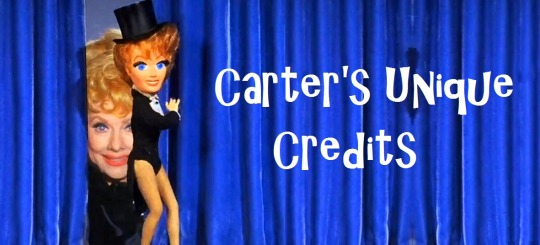
Directed by Coby Ruskin ~ Written by Larry Rhine and Lou Derman
Synopsis
Harry's doctor says he's in danger of a nervous breakdown, so Lucy suggests a house swap vacation. Unfortunately, the only home left was in Nairobi, Kenya. Their swap turns out to be a jungle hut, populated by wild animals and without modern conveniences, causing Harry to get even more tense than he was in Los Angeles.
Regular Cast
Lucille Ball (Lucy Carter), Gale Gordon (Harrison Otis Carter), Lucie Arnaz (Kim Carter)
Guest Cast

Ben Wrigley (Homer Pomeroy) played Butlers in “Lucy and Liberace” (S2;E16) and “Lucy and Jack Benny's Biography” (S3;E11). He was a British actor who appeared in the film My Fair Lady (1964) and Bednobs and Broomsticks (1971). Wrigley previously appeared as a ticket agent in “Lucy Flies to London” (TLS S5;E6). This is his last episode of “Here’s Lucy.”
Lola Fisher (Matilda Pomeroy) understudied and replaced Julie Andrews on Broadway in the musical My Fair Lady. It was the third and last of her Broadway shows. Fisher makes the second of her three “Here’s Lucy” appearances.
The Pomeroys’ first names are not spoken in the dialogue and only listed in the final credits.
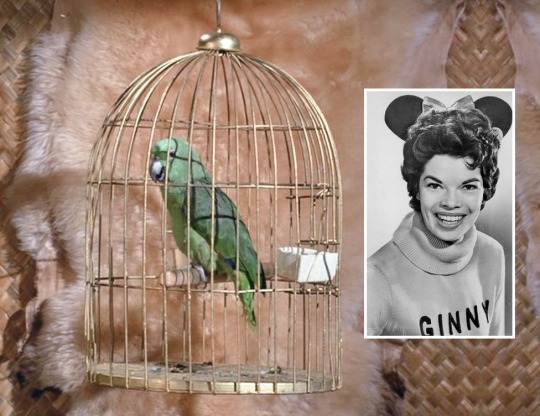
Ginny Tyler (Polly the Parrot, uncredited voice) previously voiced Clementine the sheep in “Lucy Buys a Sheep” (TLS S1;E5) and the bird voices in “Lucy Gets the Bird” (TLS S3;E12). She did the voice of the sheep in Disney’s 1964 hit Mary Poppins. She started out on radio before hosting a children’s TV show in Seattle. By the late 1950s, she had moved to Hollywood and was narrating record albums for Disney, including “Bambi” and “Babes in Toyland.” Although she died in 2012, her voice can still be heard in the chorus of birds outside The Enchanted Tiki Room at Disneyland and Walt Disney World.
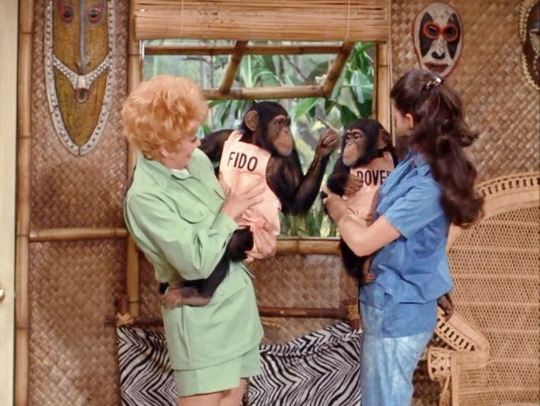
Baby Chimpanzees (Fido and Rover)
The ham radio voice of the Doctor from Nairobi General Hospital is uncredited.

This episode was first aired on Wally Cox's 47th birthday, December 6, 1971. Cox was one of Lucille Ball's favorite character actors. He appeared on four episodes of “Here's Lucy” and one “The Lucy Show.”
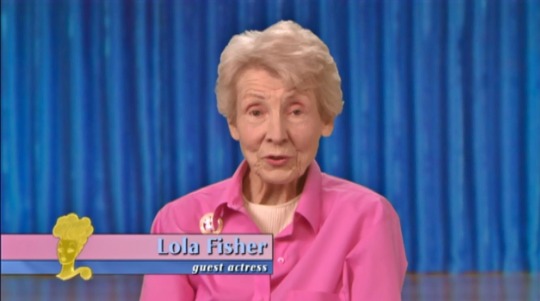
In her DVD introduction to the episode, Lola Fisher says that she later actually visited Nairobi, Kenya, and that the Hollywood version of the jungle was “pretty good.”
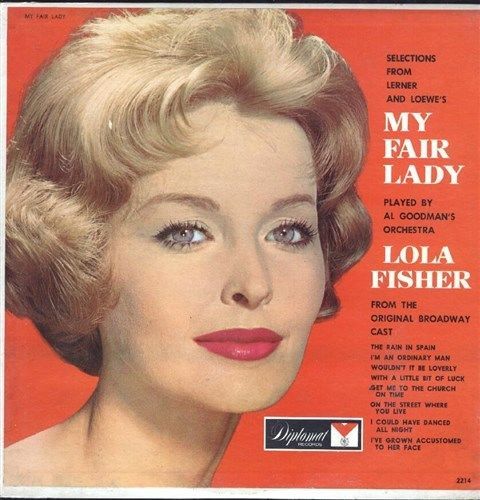
Lola Fish and Ben Wrigley (the Pomeroys) had appeared on stage in My Fair Lady together. She was Eliza, and he played her father, Alfred P. Doolittle.

Harry gets wet right away in this episode, when he crushes the paper cup that holds the water to swallow his nerve pills. It's not “Here's Lucy” until Gale Gordon gets wet!

When Harry sees the Pomeroy hut in Nairobi, he says he'd be better off in the San Diego Zoo. In “Lucy the Helpful Mother” (S2;E15), Lucy compared her house full of animals to the San Diego Zoo. It was also mentioned as a possible stop-over in “Lucy and Viv Visit Tijuana” (S2;E19). Located in Balboa Park, San Diego, California, it is one of the most famous zoos in the world. It first opened in 1916 and is still in operation today.

When Harry sees baby chimps Fido and Rover, he reminds Lucy and Kim that King Kong started out as a baby, too! King Kong, Hollywood's tale of a giant ape, was first filmed in 1933, then re-made in 1976 and 2005. A stage musical of the story has even been created. Fay Wray, one of the stars of the original film, also made The Bowery that same year, which was the uncredited screen debut of Lucille Ball.
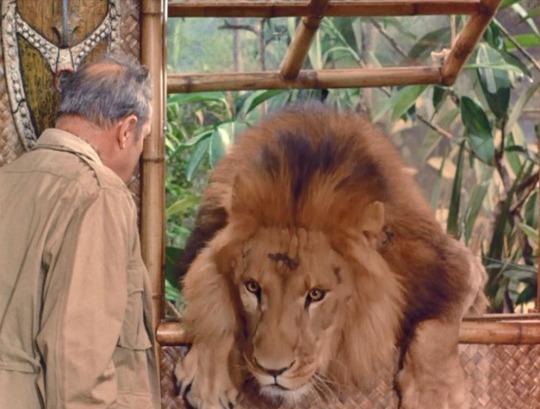
When Kim says that Fido and Rover are cute, Harry snaps back that she thought Jack the Ripper, Ivan the Terrible, and Bluebeard were all cute! All three were historical figures that reigned terror through murder, despotic leadership, and robbery, to name but a few.
Lucy cooks up a Jungle Stew consisting of gazelle gizzards and hippo ham hocks. These ingredients were doubtless chosen for their comic alliteration.

To keep Harry awake after he has supposedly been bitten by a Tsetse fly, Lucy and Kim sing “Deep in the Heart of Texas” slapping Harry in the face on the downbeat. The anthem to the Lone Star State was written in 1941 by June Hershey and Don Swander.
The Pomeroys call off the house swap because Los Angeles has made nervous wrecks of them due to smog, floods, earthquakes and the freeways!
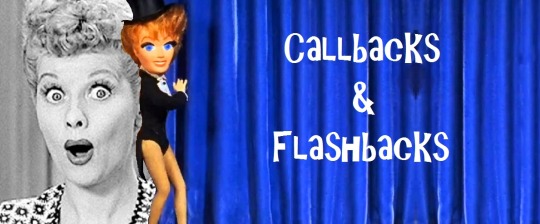
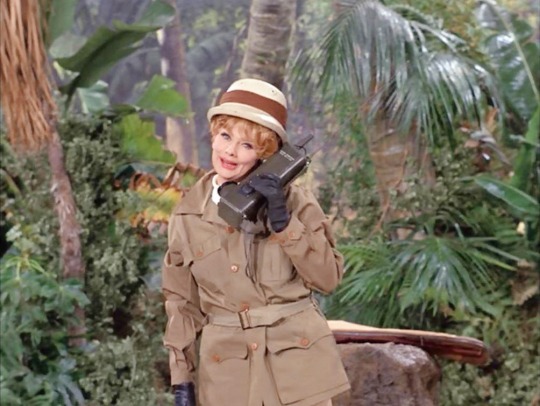
This episode is similar in setting to “Lucy's Safari” (S1;E22) which was actually supposed to be set in Topanga Canyon, outside of Los Angeles, but looked more like a jungle in the middle of Africa.

In “Lucy the Helpful Mother” (S2;E15), the Carter living room is turned into a pet shop that also features a chimpanzee (Irving)...
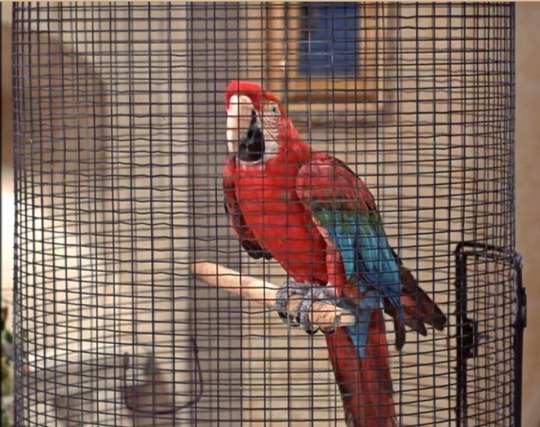
...and a talking parrot (Radish), in addition to many other live animals.

Lucille Ball had previous experience with chimps in “Lucy the Babysitter” (TLS S5;E16) which featured Lucy Carmichael and three baby chimps.
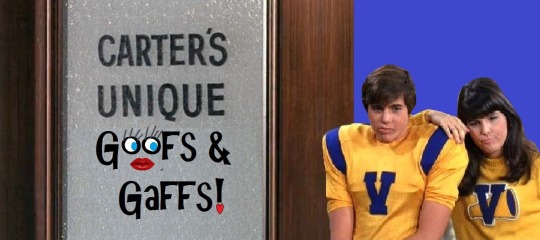
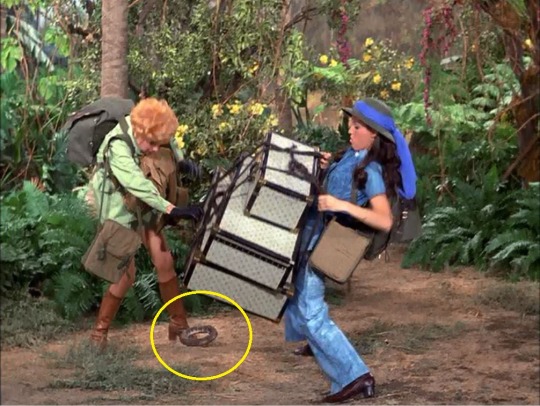
Oops! When Lucy enters with the luggage on her head, she stoops to set it down and something falls off her head and underneath the stack of suitcases. This is a foam ring that Lucille Ball had between her head and the luggage as a cushion and to prevent her hair from being flattened!
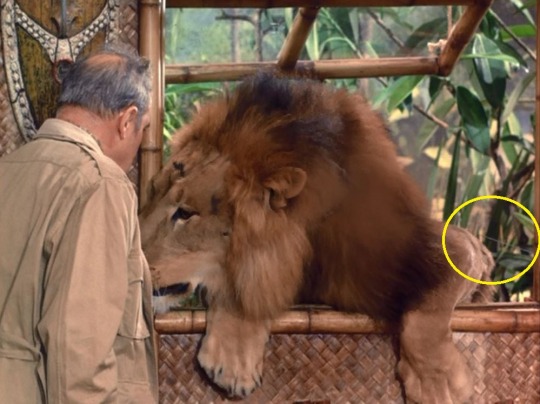
Lion-Eyes! When the lion leaps up at the window, the animal's taut wire restraints can be seen at the right.
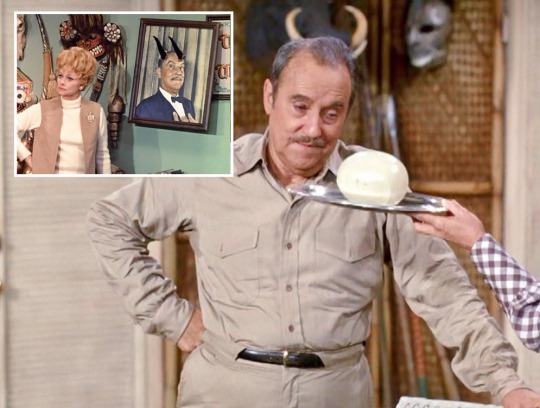
Horny Harry! When Harry stares at the ostrich egg, the boar's teeth on the wall behind him make it look like Harry has horns! This devilish look was intentionally given to Harry in “Lucy Protects Her Job” (S2;E14).

“Lucy in the Jungle” rates 1 Paper Heart out of 5
Although not quite as bad as “Lucy’s Safari” (S1;E22), this episode is basically just Lucy interacting with live animals, which was better done in “Lucy, the Helpful Mother” (S2;E15).

#Here's Lucy#Lucille Ball#Gale Gordon#Lucie Arnaz#Lucy in the Jungle#Coby Ruskin#Larry Rhine#Lou Derman#Lola Fisher#Ben Wrigley#Ginny Tyler#Kenya#Nairobi#Africa#King Kong#Chimpanzees#Lion#Parrot#San Diego Zoo#Deep in the Heart of Texas#My Fair Lady#CBS#TV#1971
2 notes
·
View notes
Text
Lincoln Center’s sumptuous fourth Broadway revival of “My Fair Lady,” the supremely tuneful and witty 1956 Lerner and Lowe musical adapted from George Bernard Shaw’s pointed 1913 play “Pygmalion,” features a revelation and a looming question for those who know the musical. The revelation is Lauren Ambrose as Eliza Doolittle, and the question is: Does the story still work if we see no romantic feelings develop between Eliza and Henry Higgins, her bullying speech teacher?
Lauren Ambrose
Lauren Ambrose and Harry Hadden Paton
Harry Hadden-Paton as Henry Higgins
Norbert Leo Butz as Alfred Doolittle
Jordan Donica as Freddy Eynsford-Hill
Harry Hadden-Paton, Lauren Ambrose, and Allan Corduner in “The Rain in Spain”
Lauren Ambrose as Eliza and Diana Rigg as Mrs. Higgins
Norbert Leo Butz as Alfred Doolittle in “Get Me To the Church on Time”
Ambrose, still best known as the oddball art student daughter in the HBO series Six Feet Under, turns out to have a beautiful soprano voice. She also starts off as an impressively off-putting Eliza, a lowborn feral street vendor with a grimy basket of flowers whose dense Cockney bleating and sniveling manner grate on highborn Higgins (Harry Hadden-Paton,) who happens to encounter her outside the Royal Opera House in Covent Garden. Under Higgins’ tutelage, Eliza slowly and magnificently blossoms into a graceful, intelligent and independent woman. There is no question that at first Higgins has no interest in her, as a woman or even as a human being; he actively disdains her. He simply wants to win a bet he made with fellow linguist Pickering (Allan Corduner) that, merely by teaching her proper English pronunciation, he can pass off “this draggle-tailed guttersnipe” as a duchess at the Embassy Ball in six months’ time. It’s a nice touch that during their tutoring sessions, Higgins wears a white lab coat, as if he’s the scientist and she’s his experiment. What happens in many productions of “My Fair Lady” is that Eliza grows fond of Higgins:
I’ll never know what made it so exciting; why all at once my heart took flight. I only know when he began to dance with me, I could have danced, danced, danced all night
And, although it takes longer and it’s against his nature, Higgins grows fond of Eliza:
I was serenely independent and content before we met; surely I could always be that way again— and yet I’ve grown accustomed to her looks; accustomed to her voice: accustomed to her face.
And then this usually leads to an ambiguous ending, which offers the audience hope that perhaps they will get together.
However, in this production directed by Bartlett Sher, a wordless action makes the ending unambiguous – they will not get together – and, despite the lyrics to “I Could Have Danced All Night” and “I’ve Grown Accustomed to Her Face,” the actors make clear all along that there’s no amorous spark between them.
This might baffle or irk some devotees of this Golden Age musical, but it’s important to note that Alan Jay Lerner’s book and lyrics changed Shaw’s original intent. The playwright explicitly abhorred the notion that Henry Higgins and Eliza Doolittle would become romantically inclined. “Eliza has no use for the foolish romantic tradition that all women love to be mastered…,” wrote Shaw, a socialist and a pioneering advocate for women’s equality, in an epilogue to the published play, explaining at great length what happens to Eliza in the years after the play ends. And Henry Higgins, the “confirmed bachelor” of Shaw’s imagination, seems too immature to be able to love anybody.
So Sher’s adjustment is not an act of revisionism but of restoration, which happens to fit the values of a 2018 New York audience more comfortably than the original adaptation from the 1950s. Shaw’s pointed comments on class and gender are now brought more to the fore. It registers when Eliza says things like: “The difference between a lady and a flower girl is not how she behaves, but how she is treated.”
However one judges the director’s unfamiliar shift in the inner life of the characters, his treatment of the outer life of the musical is familiar from his previous acclaimed Lincoln Center revivals of “South Pacific” and “The King and I.” Sher’s “My Fair Lady” is an elaborate affair, featuring several stellar performances, all 15 memorable songs lavishly backed by a 28-piece orchestra, and a lush design by his usual collaborators, especially scenic designer Michael Yeargan and costume designer Catherine Zuber. Zuber is likely up for her 16th Tony nomination for outfits that are not only lovely and period-perfect; they also often clarify the moment and enhance the tone. I’ve already mentioned the white coat. When Higgins brings Eliza to Ascot to test-run her newfound upper class manner, she is saddled with a fashionable ridiculously unwieldy hat that looks in danger of toppling to the ground, and bringing her with it.
Yeargan’s sets, which effortlessly roll off and on the immense stage of the Vivian Beaumont, can take your breath away. Sometimes, though, they take up all the oxygen. Higgins’ mansion is solid, wood-lined, book-lined, two-tiered, awesome. It’s also on a turntable that rotates to reveal other rooms besides the study in Higgins mansion, which Eliza walks through as she’s singing; admittedly impressive, this didn’t especially add anything – yes, we figured the mansion had more than one room.
Similarly, Christopher Gatelli’s choreography is lively throughout, as it was in Sher’s “King and I” and in “Newsies,” which won Gatelli a Tony. But then there’s the number, “Get me to The Church on Time,” in which Eliza’s father Alfred P. Doolittle (the always reliable Norbert Leo Butz) has turned against his will from low class loafer to respectable member of the middle class, celebrates before his girlfriend is forcing him to marry her the next day. Among the high-kicking ensemble of drunken rowdy celebrants are a music hall full of can-can girls, most of them bearded men in drag. I mean…..what?
I suspect these occasional excesses are intended to bypass our cultural cerebrum to massage our theatrical limbic system, or even burrow into our Broadway brain stem.
This may help explain why, despite the director’s intellectual commitment to keep the relationship unromantic, Sher cast as Higgins an actor who on the surface seems to be more of a match for Ambrose’s Eliza than 48-year-old Rex Harrison was to 20-year-old Julie Andrews when the original production of My Fair Lady opened on Broadway. Harry Hadden-Paton is not only close in age to Lauren Ambrose; he is actually three years younger than she is.
Luckily, audience members at “My Fair Lady” have more straightforward outlets for any romantic yearnings. This includes stand-out Jordan Donica as Freddy, who we’re meant to see as a more apt match for Eliza; he is certainly swoon-worthy when he sings the outright romantic ballad “On the Street Where You Live.”
And then there’s Dame Diana Rigg as Mrs. Higgins, Henry’s mother, who is on a whole other level of swoon-worthy. She not only lands every one of her witty lines with seeming ease. Her very presence romantically evokes different memories for different generations — the impossibly mod spy Emma Peel from “The Avengers,” the scheming Lady Olenna Tyrell from “Game of Thrones,” or even, on stage in London, a certain Cockney flower girl who becomes a lady.
My Fair Lady Lincoln Center’s Vivian Beaumont Theater Book by Alan Jay Lerner; Music by Frederick Loewe; Lyrics by Alan Jay Lerner; Adapted from “Pygmalion” by: George Bernard Shaw; Original musical arrangements by Robert Russell Bennett and Phil Lang; Dance arrangements by Trude Rittmann; Musical Director: Ted Sperling Directed by Bartlett Sher; Choreographed by Christopher Gattelli Scenic Design by Michael Yeargan; Costume Design by Catherine Zuber; Lighting Design by Donald Holder; Sound Design by Marc Salzberg; Hair and Wig Design by Tom Watson Cast Lauren Ambrose, Harry Hadden-Paton, Norbert Leo Butz, Diana Rigg, Allan Corduner, Jordan Donica, Linda Mugleston, Manu Narayan, Cameron Adams, Shereen Ahmed, Kerstin Anderson, Heather Botts, John Treacy Egan, Rebecca Eichenberger, SuEllen Estey, Christopher Faison, Steven Trumon Gray, Adam Grupper, Michael Halling, Joe Hart, Sasha Hutchings, Kate Marilley, Liz McCartney, Justin Lee Miller, Rommel Pierre O’Choa, Keven Quillon, JoAnna Rhinehart, Tony Roach, Lance Roberts, Blair Ross, Christine Cornish Smith, Paul Slade Smith, Samantha Sturm, Matt Wall, Michael Williams, Minami Yusui and Lee Zarret Runtime 2 hrs. and 55 min including one intermission
My Fair Lady Review: Unromantic Eliza in Lavish Revival Lincoln Center’s sumptuous fourth Broadway revival of “My Fair Lady,” the supremely tuneful and witty 1956 Lerner and Lowe musical adapted from George Bernard Shaw’s pointed 1913 play “Pygmalion,” features a revelation and a looming question for those who know the musical.
0 notes